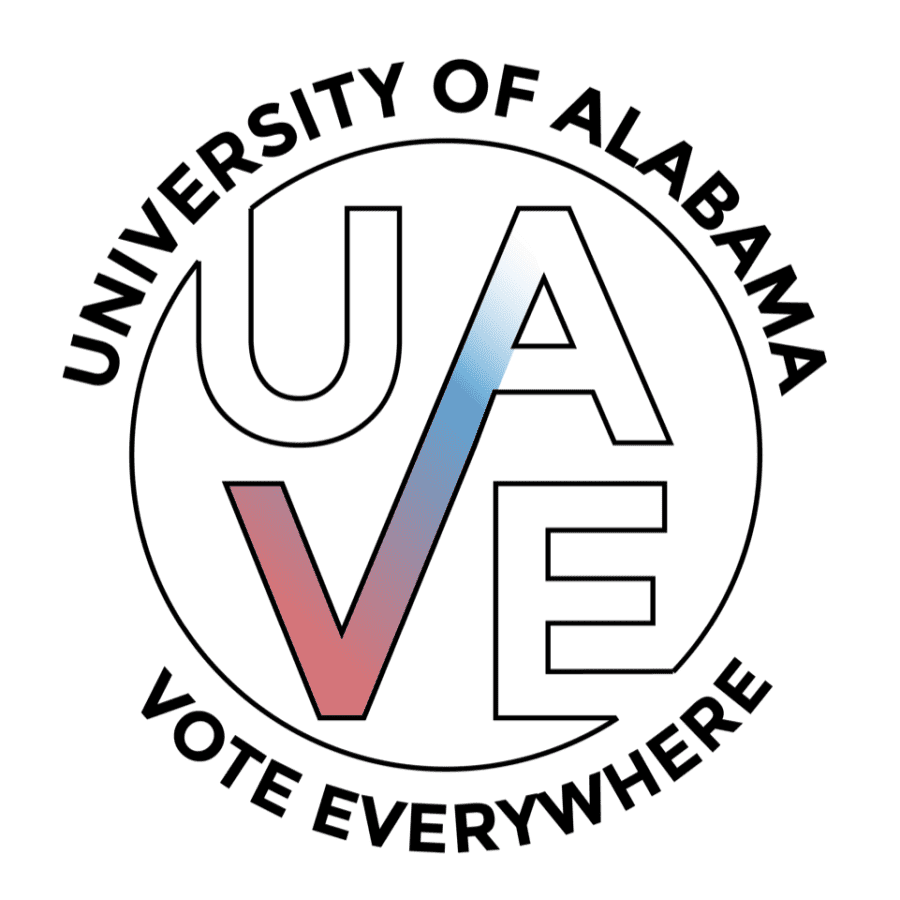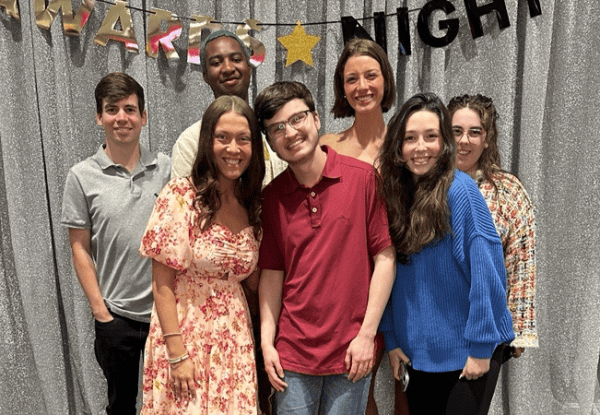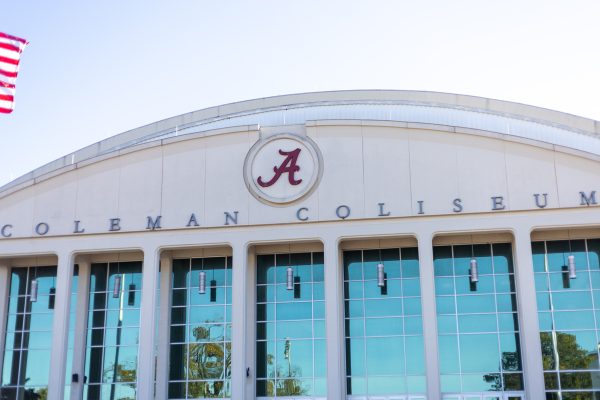The Voting Rights Act needs a revival
This piece was written by Alli Swann in collaboration with her peers at UA Vote Everywhere, a campus branch of the Andrew Goodman Foundation dedicated to voting rights and student advocacy. As students that follow voting rights issues closely, they see the past of court cases repeating itself.
July 14, 2021
To achieve a truly just democracy, one that is representative of all citizens, Americans must reject the idea that discriminatory election practices are an antiquated phenomenon.
On July 1, the newly formed Supreme Court issued a decision on the case Brnovich v. Democratic National Committee. The highly anticipated case examined two policies contested by the DNC in Arizona. Both policies, they alleged, violated Section 2 of the Voting Rights Act of 1965 through its disparate impact on racial minorities.
As an organization of voting rights activists, UA Vote Everywhere has been following this case closely.
To understand why this contest gained widespread attention and why the case’s outcome worried voting rights activists, one must turn to the creation of the VRA itself. The VRA’s creation was not a simple endeavor. It was the culmination of years of discrimination, advocacy, sacrifice and a relentless pursuit of justice by activists from across the country.
Prior to the VRA, there was no national standard in election practices. This granted states and local governments the discretion to implement any desired voting requirements.
As a result, states employed discriminatory procedures in reaction to the Reconstruction Amendments that enfranchised Black Americans. Through discriminatory actions such as grandfather clauses, poll taxes and literacy tests, local registrars ensured that many Black Americans, particularly in the South, were unable to vote.
Though the right was enshrined in the Fifteenth Amendment to the Constitution, local jurisdictions used misinformation, discrimination and violence to ensure that this right was merely an idea on a document.
The Jim Crow-era practice of discrimination in election procedures continued until 1965 — the year of the VRA’s passage. The VRA at last responded to discriminatory election practices by establishing a federal standard of voting rights, one that extended beyond only white citizens.
The VRA drew its strength from two important sections, both of which have been decimated by the Supreme Court. Its strongest provision was found in Section 5 of the act, which outlined the practice of preclearance, or the ability of the federal government to “preclear” proposed election procedures by jurisdictions that had a history of discriminatory election practices.
From its inception until 2014, covered states, determined by a formula in Section 4(b), were required to submit their proposals to the Department of Justice. These proposals would be denied if deemed discriminatory.
Given decades of voter suppression, this provision was a necessary one. It served as a national answer to the discretion that local jurisdictions used to prevent racial minorities from exercising their constitutional rights.
Section 2 reiterated the language of the Fifteenth Amendment, prohibiting voting procedures that discriminate on the basis of race, sex or language. This section was expanded by Congress in 1982 to prevent such procedures if their ultimate impact was discriminatory, regardless of whether the procedure was enacted with discriminatory intent.
This newly adopted interpretation was dubbed “the results test.”
The intent, necessity and impact of these sections have been grossly neglected by the Supreme Court. Despite the VRA’s importance to the Civil Rights Movement, both then and now, the court appears to be on a mission to ensure its destruction.
The attack on the VRA began in June 2013. At this time, the court was tasked with hearing the arguments of the case Shelby County v. Holder. The case was brought by Shelby County to contest both the preclearance provision in Section 5, as well as the coverage formula in Section 4(b), which determined the jurisdictions subject to preclearance.
In this case, Shelby County alleged that these provisions were an unconstitutional use of federal power that discriminated against certain states subject to Section 5.
Though the preclearance provision had protected voting rights for many decades, the court eliminated it. Without ruling on the constitutionality of Section 5, the court asserted that the coverage formula itself was unconstitutional due to its effect on only particular states. While Section 5 technically stood, it had no jurisdictions to apply to, rendering it useless.
Chief Justice John Roberts, delivering the opinion of the court, asserted that the coverage formula relied on outdated information. He ignored Congress’ ability to enforce the Fifteenth Amendment in favor of a more selective interpretation of the law.
Citing recent increases in minority political participation, Roberts declared discrimination in election practices a relic of the past. In doing so, he ignored why these numbers had increased in the first place. In the absence of the federal government’s protection, states soon enacted voting procedures that limited voting accessibility.
Within 24 hours of the Shelby ruling, Texas introduced a strict photo ID law. Many states followed suit in the coming days, months and years, inviting us all to consider how preclearance had indeed prevented such laws. After the end of preclearance, the last stronghold of the VRA was Section 2.
Using Section 2, voting rights activists turned to a strategy of litigation. In absence of a national standard of voting rights like preclearance, this method was one of the only means to challenge discriminatory election practices. It wasn’t as effective, but it still offered the ability to challenge laws with a disparate impact, regardless of their initial intent.
That is, until the case of Brnovich v. DNC. In this case, the DNC challenged Arizona laws through Section 2, arguing that they had a disparate impact on racial minorities.
More important than the facts of this case are the implications its ruling may have. After the gutting of the preclearance provision in 2013, the nation anticipated this case with both hope and worry. Voting rights activists feared that the newly appointed court would take the same route as it did in 2013.
Their fears were realized.
In a continued display of disregard for the necessity of the VRA, the court ruled in favor of Arizona. Supposed originalist Justice Samuel Alito delivered the opinion of the court, again adopting an inventive interpretation of the law.
Alito, circumventing the intent of the results test, examined Section 2, asserting that it applies only to a law’s “openness” to various demographics. In doing so, he created various new requirements, including one that would require court challenges to be successful only if they violate the standard of political participation in 1982, when the results test was formed.
This action is particularly interesting given the fact that the court ruled in 2013 that voting procedures shouldn’t be based on outdated information. The standard in question at the time came from the renewal of the VRA just a few years prior to 2013. Given the decades of separation from the results test’s formation, how can this standard set by Alito not be outdated?
Like many that have borne witness to the effects of Shelby after the 2013 decision, UA Vote Everywhere hoped that the court would act to preserve the little protection left in the VRA. This wasn’t the case.
We share the view of Justice Elena Kagan in her dissent, as she warned against the dangers of such actions in these perilous moments.
“If a single statute represents the best of America, it is the Voting Rights Act. It marries two great ideals: democracy and racial equality,” she said of the VRA. “If a single statute reminds us of the worst of America, it is the Voting Rights Act. Because it was — and remains — so necessary.”
We, like Justice Kagan, know of the real and extensive danger posed by voter suppression efforts. In the absence of federal protection, legislators who seek to make voting more difficult will do so with ease.
Court decisions of this degree have a real and immediate impact on the voting rights of millions across the country. After the Shelby decision, states across the country began to increase voter suppression efforts at unprecedented rates.
We are not discouraged but, instead, even more motivated toward the cause of voting rights. Just like in the case of Shelby, this instance proves the continued necessity of voting rights activists, like UA Vote Everywhere, to combat misinformation and assist college students and other community members in the political process.
While we are disheartened by the court’s actions in this case, we are also motivated by those who came before us. We seek to honor the legacy of James Cheney, Andrew Goodman and Michael Schwerner and follow their example of youth leadership in voting rights.
As waves of voter suppression hit state legislatures, we support the reestablishment of a national standard of voting rights through legislation, including the For the People Act and the John Lewis Voting Rights Act.
The John Lewis Voting Rights Act must be passed in order to restore preclearance under a revised coverage formula, reflective of recent data on voter turnout. This action of federal power would prevent further claims that the coverage formula represents outdated information on political participation.
Until Congress passes this legislation, we will continue to call them, to write them and to make our voices heard. In the quest to ensure equity in voting rights, we will continue to educate and equip this nation’s emerging leaders.
Sign the petition to make your voice heard. In the absence of the full strength of the VRA, this legislation is more important than ever.
As John Lewis himself famously said, sometimes you have to get into “good trouble.” Well, universal voting rights are still out of reach, and there is a lot of “good trouble” left for us to get into.
Opinions Editor Ava Fisher is an ambassador for UA Vote Everywhere.










